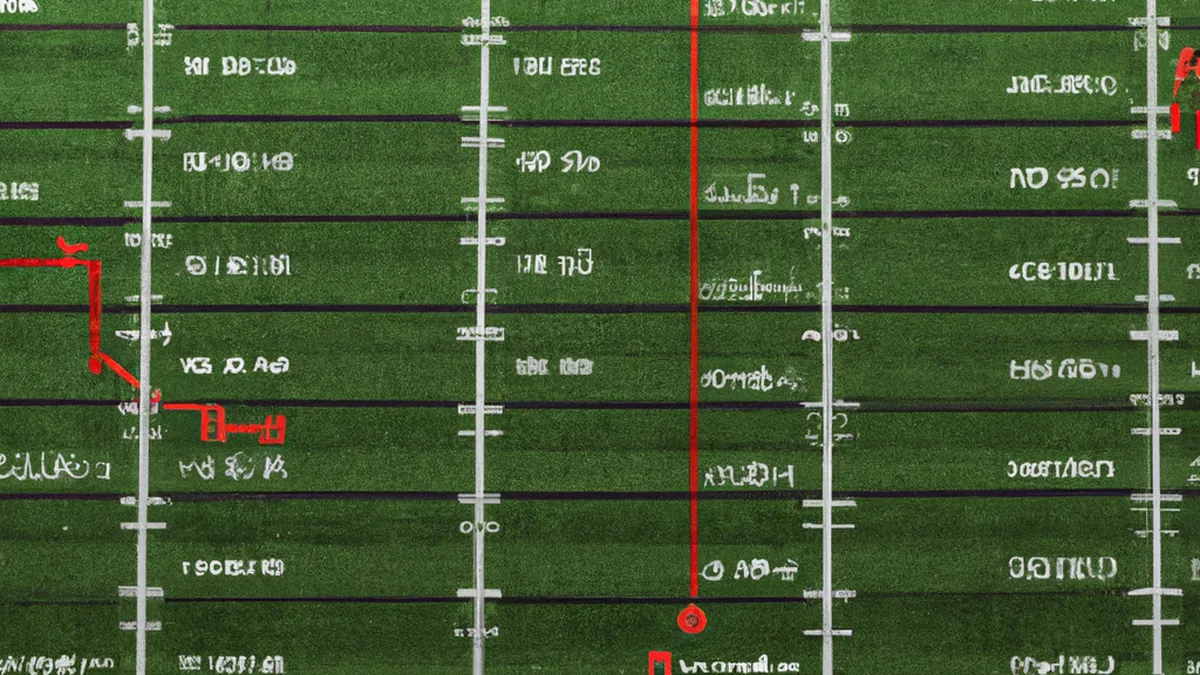Revitalize Offense with Smart Route Choices
The Effect of Route Running on Game Momentum
In football, momentum shifts quickly. A single play can change a game’s trajectory, igniting excitement and altering both teams’ mental states. Route running significantly influences this momentum. Effective route running impacts individual performance and the overall game. This article explores route running’s intricacies and its vital role in shifting game momentum.
Understanding Route Running
Route running involves a receiver executing a specific path to create separation from defenders and present a target for the quarterback. Each route has distinct characteristics, including angles, depths, and timing. Precise execution creates opportunities for the quarterback, leading to successful plays, scoring chances, and momentum shifts.
The Importance of Precision
Precision matters in route running. Receivers must master their assigned routes, as a slight misstep can lead to an incomplete pass or interception. Understanding foot placement, body positioning, and break points is crucial. Mastery builds trust with the quarterback and the team.
Timing is Everything
Timing plays a critical role in route execution. Receivers must synchronize their movements with the quarterback’s release. Synchronization increases success likelihood. This trust creates a positive dynamic, energizing the entire team. A well-timed connection boosts confidence for the receiver and the offense.
Tips for Improving Route Running
Improving route running requires dedication and strategy. Here are effective tips to enhance your skills:
1. Study the Playbook
Familiarity with the playbook is crucial for receivers. Spend time reviewing each route and understanding its purpose in the game plan. This knowledge boosts confidence and clarity during games.
2. Practice Footwork
Good footwork enhances route running. Focus on your initial steps after the snap, as these dictate route success. Practice explosive cuts and sharp breaks to create separation from defenders. Incorporate agility drills to improve foot speed and mobility.
3. Visualize Success
Visualization serves as a powerful tool in sports. Before games, mentally rehearse running each route. Picture executing the route perfectly, catching the ball, and making a play. This rehearsal boosts your confidence and performance on the field.
4. Analyze Film
Reviewing game film helps improve route running. Analyze past performances and identify areas for improvement. Pay attention to successful routes by other receivers, noting their techniques.
Conclusion
In summary, effective route running significantly impacts game momentum. Mastering precision, timing, and strategy enhances individual and team performance.
Below are related products based on this post:
FAQ
What is route running in football, and why is it important?
Route running involves a receiver executing a specific path to create separation from defenders and provide a target for the quarterback. It’s important because precise execution can lead to successful plays, scoring opportunities, and shifts in game momentum, ultimately influencing the overall performance of the team.
How can a receiver improve their route running skills?
A receiver can improve their route running skills by studying the playbook to understand the purpose of each route, practicing footwork to enhance agility and speed, visualizing successful execution before games, and analyzing game film to identify areas for improvement and learn from successful techniques used by others.
What role does timing play in route running?
Timing is critical in route running as receivers must synchronize their movements with the quarterback’s release. This synchronization increases the likelihood of successful plays and builds trust between the receiver and quarterback, energizing the entire team and boosting overall confidence on the field.















Post Comment